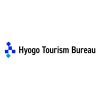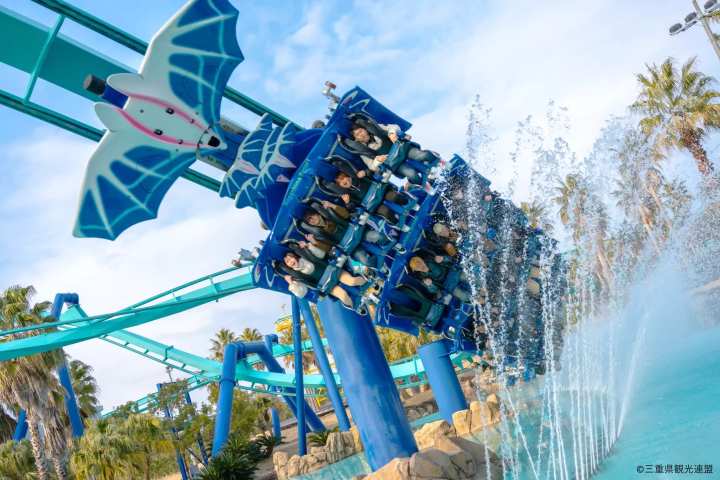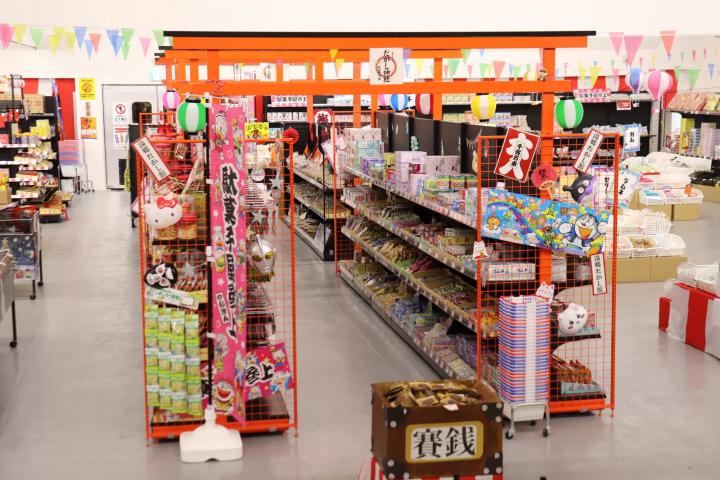[Hyogo Kobe] Enjoy Taisho romance! Enjoy digital exhibits that utilize cutting-edge technology at the Hyogo-no-tsu Museum!
![[Hyogo Kobe] Enjoy Taisho romance! Enjoy digital exhibits that utilize cutting-edge technology at the Hyogo-no-tsu Museum!](https://resources.matcha-jp.com/resize/720x2000/2023/09/20-146357.webp)
During the Edo period, Hyogo-no-tsu was an important port for Kitamaebune ships, which transported products from the Sea of Japan from Ezochi (Hokkaido) to Osaka. Hyogo-no-tsu no-tsu, located on the port side of Hyogo Ward, Kobe City, Hyogo Prefecture, is the birthplace of Hyogo Prefecture, and is home to the spirit of merchants, and has been designated as a Japanese Heritage Site as a port of call for the Kitamaebune ship. This museum facility consists of two buildings: ``Hyogo Hajimari-kan''...
-
Table of Contents
- 1. Experience the charm of Hyogo by seeing, hearing, and touching “Hyogo Hajimari-kan”!
- Permanent exhibition hall divided into four eras
- (1) Kiyomori's dream (ancient)
- (2) Port of the Japanese King “Prosper” (Medieval)
- (3) “Bustle” in port cities (early modern times)
- (4) Hyogo, the place of beginning “Kaike” (Modern)
- 2.Recreate the Bakumatsu Restoration with the “Virtual Tour” of the “First Prefectural Office Building”!
- [Official website] Hyogo prefecture tourism site HYOGO! navigation
1. Experience the charm of Hyogo by seeing, hearing, and touching “Hyogo Hajimari-kan”!
The concept of Hyogo-no-tsu Museum is "Hamidel Hakubutsukan." This museum facility consists of two buildings: ``Hyogo Hajimari-kan'' and ``First Prefectural Office Building,'' which is a restored facility of the first Hyogo Prefectural Office.
![[Hyogo Kobe] Enjoy Taisho romance! Enjoy digital exhibits that utilize cutting-edge technology at the Hyogo-no-tsu Museum!](https://resources.matcha-jp.com/resize/720x2000/2023/09/20-146362.webp)
There are a lot of things that are ``Hamidel'' that are different from the traditional ``Hakubutsukan'', such as ``see, hear, and touch'' experiences and events that make use of extraordinary spaces. The exterior of the building is four stories above ground, and the entire entrance is made of glass, allowing you to enter in an innovative atmosphere.
![[Hyogo Kobe] Enjoy Taisho romance! Enjoy digital exhibits that utilize cutting-edge technology at the Hyogo-no-tsu Museum!](https://resources.matcha-jp.com/resize/720x2000/2023/09/25-146862.webp)
At the entrance, the motif is the Kitamaebune that connected Ezochi (Hokkaido) and Hyogo during the Edo period, with 15 lights hanging from the ceiling.
![[Hyogo Kobe] Enjoy Taisho romance! Enjoy digital exhibits that utilize cutting-edge technology at the Hyogo-no-tsu Museum!](https://resources.matcha-jp.com/resize/720x2000/2023/09/22-146723.webp)
In front of the ticket office, you will be greeted by a bird's-eye view of Hyogo-no-tsu, drawn in 1868 at the end of the Edo period.
![[Hyogo Kobe] Enjoy Taisho romance! Enjoy digital exhibits that utilize cutting-edge technology at the Hyogo-no-tsu Museum!](https://resources.matcha-jp.com/resize/720x2000/2023/09/22-146679.webp)
Historically, the scene two hours before the ``Kobe Incident'' took place is faithfully recreated. This is said to be a procession of Bizen clan soldiers entering the inn to eat lunch. There is also a reproduction of Hyogo Prefecture's first governor, Hirofumi Ito, entering the port. Please check it on the spot when you enter.
Permanent exhibition hall divided into four eras
You can learn about the history of Hyogo-no-tsu, the origins of Hyogo Prefecture, and the charms of the "Hyogo Five Kingdoms" that make up the prefecture, along the trends of the times. Projection mapping, AR (augmented reality), MR (mixed reality), and touchable exhibits will entertain both children and adults with content that will keep them entertained.
(1) Kiyomori's dream (ancient)
![[Hyogo Kobe] Enjoy Taisho romance! Enjoy digital exhibits that utilize cutting-edge technology at the Hyogo-no-tsu Museum!](https://resources.matcha-jp.com/resize/720x2000/2023/09/22-146632.webp)
![[Hyogo Kobe] Enjoy Taisho romance! Enjoy digital exhibits that utilize cutting-edge technology at the Hyogo-no-tsu Museum!](https://resources.matcha-jp.com/resize/720x2000/2023/09/22-146724.webp)
In Chapter 1, Kiyomori's Dream (Ancient), you can learn about the history of Hyogo-no-tsu and its surroundings through stories that focus on the people who have connections to Hyogo, such as Taira no Kiyomori, Masashige Kusunoki, and Yoshimitsu Ashikaga. Masu.
(2) Port of the Japanese King “Prosper” (Medieval)
![[Hyogo Kobe] Enjoy Taisho romance! Enjoy digital exhibits that utilize cutting-edge technology at the Hyogo-no-tsu Museum!](https://resources.matcha-jp.com/resize/720x2000/2023/09/21-146555.webp)
![[Hyogo Kobe] Enjoy Taisho romance! Enjoy digital exhibits that utilize cutting-edge technology at the Hyogo-no-tsu Museum!](https://resources.matcha-jp.com/resize/720x2000/2023/09/22-146726.webp)
Chapter 2 features digital exhibits that will fascinate even adults, including a ``hands-on'' exhibit where pictures come to life when you place your hand on them.
(3) “Bustle” in port cities (early modern times)
![[Hyogo Kobe] Enjoy Taisho romance! Enjoy digital exhibits that utilize cutting-edge technology at the Hyogo-no-tsu Museum!](https://resources.matcha-jp.com/resize/720x2000/2023/09/21-146556.webp)
Chapter 3, ``The Bustness of Port Cities,'' provides a clear picture of the Edo period, when Hyogo-no-tsu flourished.
![[Hyogo Kobe] Enjoy Taisho romance! Enjoy digital exhibits that utilize cutting-edge technology at the Hyogo-no-tsu Museum!](https://resources.matcha-jp.com/resize/720x2000/2023/09/25-146884.webp)
A 1/10 scale model of the Kitamaebune that connected Ezochi (Hokkaido) and Hyogo is displayed, and the details of the cargo are reproduced in detail.
![[Hyogo Kobe] Enjoy Taisho romance! Enjoy digital exhibits that utilize cutting-edge technology at the Hyogo-no-tsu Museum!](https://resources.matcha-jp.com/resize/720x2000/2023/09/25-146880.webp)
``Ike de Touch'' is a CG reproduction of ``Hyogo Ikesu,'' which is said to be one of Settsu's famous spots. This is a game where you can actually catch fish from a fish tank, and both children and adults can enjoy it together.
![[Hyogo Kobe] Enjoy Taisho romance! Enjoy digital exhibits that utilize cutting-edge technology at the Hyogo-no-tsu Museum!](https://resources.matcha-jp.com/resize/720x2000/2023/09/25-146883.webp)
This zone is the ``Sugoroku'' part of the ``Hyogo Tsu Famous Places Tour'' where children can lose track of time and become immersed. At the top right, throw the dice in the bucket to start Sugoroku.
(4) Hyogo, the place of beginning “Kaike” (Modern)
![[Hyogo Kobe] Enjoy Taisho romance! Enjoy digital exhibits that utilize cutting-edge technology at the Hyogo-no-tsu Museum!](https://resources.matcha-jp.com/resize/720x2000/2023/09/25-146945.webp)
The final chapter is a zone that introduces Hyogo after the opening of Kobe Port. The origins of modern Hyogo will be developed into a story.
![[Hyogo Kobe] Enjoy Taisho romance! Enjoy digital exhibits that utilize cutting-edge technology at the Hyogo-no-tsu Museum!](https://resources.matcha-jp.com/resize/720x2000/2023/09/25-146885.webp)
In this area of ``Hyogo Now and Past'', you can look back on the past of Hyogo Prefecture 150 years ago using old photographs. You can travel back in time to the end of the Edo period and take photos.
“Hyogo Dynamic Theater” Experience a powerful and turbulent drama!
![[Hyogo Kobe] Enjoy Taisho romance! Enjoy digital exhibits that utilize cutting-edge technology at the Hyogo-no-tsu Museum!](https://resources.matcha-jp.com/resize/720x2000/2023/09/25-146940.webp)
A short movie based on the tumultuous drama that occurred when the prefecture was founded will be shown in a 13-meter-wide dynamic theater.
“Hyogo-no-tsu Town Walking Tour” Enjoy walking around the city and visiting historical sites!
![[Hyogo Kobe] Enjoy Taisho romance! Enjoy digital exhibits that utilize cutting-edge technology at the Hyogo-no-tsu Museum!](https://resources.matcha-jp.com/resize/720x2000/2023/09/25-146887.webp)
After experiencing the Hyogo-no-tsu Museum, we recommend walking through the city where history is still alive. Around the museum, there are historical sites dotted around the city that convey more than a thousand years of history. You can tour the historic sites with a navigator and experience the history that is rooted in this area.
Date: Every Sunday
Event time: 13:00-15:00 (about 2 hours)
Capacity: 10 people
Contact: 078-651-1868
"Hyogo Discovery Plaza" is full of attractions such as famous spots and special products of "Hyogo Gokoku"!
![[Hyogo Kobe] Enjoy Taisho romance! Enjoy digital exhibits that utilize cutting-edge technology at the Hyogo-no-tsu Museum!](https://resources.matcha-jp.com/resize/720x2000/2023/09/25-146912.webp)
Next to the permanent exhibition is the ``Hyogo Discovery Plaza,'' where the attractions of the ``Hyogo Five Kingdoms'' are concentrated, including famous spots and special products. You can touch and see local specialties. ``Awajikuni'' has cute onions that are a specialty of Awaji Island.
2.Recreate the Bakumatsu Restoration with the “Virtual Tour” of the “First Prefectural Office Building”!
![[Hyogo Kobe] Enjoy Taisho romance! Enjoy digital exhibits that utilize cutting-edge technology at the Hyogo-no-tsu Museum!](https://resources.matcha-jp.com/resize/720x2000/2023/09/25-146942.webp)
・The first prefectural office building built in Hyogo-no-tsu when the prefecture was established has been restored based on illustrations.
・You can realistically experience historical spaces such as the governor's office, garden, temporary prison, and Ohakushu.
・This state-of-the-art virtual tour recreates the drama of the Bakumatsu Restoration that unfolded at the first prefectural office building.
・A wealth of "spots that stand out" have been recreated, including photo shoots using AR technology.
![[Hyogo Kobe] Enjoy Taisho romance! Enjoy digital exhibits that utilize cutting-edge technology at the Hyogo-no-tsu Museum!](https://resources.matcha-jp.com/resize/720x2000/2023/09/21-146560.webp)
A signboard reading ``Hyogo Prefectural Office'' is posted at the entrance of the ``First Prefectural Office Building''. If you show the stub for ``Hyogo Hajimari-kan'' at the entrance, you will receive the other stub for ``First Prefectural Office Building.''
![[Hyogo Kobe] Enjoy Taisho romance! Enjoy digital exhibits that utilize cutting-edge technology at the Hyogo-no-tsu Museum!](https://resources.matcha-jp.com/resize/720x2000/2023/09/21-146561.webp)
From the room that recreates the governor's office, you can see a ``Hōrai-style Japanese garden'' where you can enjoy seasonal plants.
![[Hyogo Kobe] Enjoy Taisho romance! Enjoy digital exhibits that utilize cutting-edge technology at the Hyogo-no-tsu Museum!](https://resources.matcha-jp.com/resize/720x2000/2023/09/25-146874.webp)
When you enter the first prefectural office building, on the right side is a reproduction of the governor's room, where prefectural office operations were conducted at the time.
![[Hyogo Kobe] Enjoy Taisho romance! Enjoy digital exhibits that utilize cutting-edge technology at the Hyogo-no-tsu Museum!](https://resources.matcha-jp.com/resize/720x2000/2023/09/25-146877.webp)
``Virtual VISIT'' uses MR (mixed reality) to give you the experience of traveling back in time. This is a virtual tour that takes you to 1868, the year Hyogo Prefecture was founded, and meets the main characters of this prefectural office, including the first Hyogo Prefectural Governor Shunsuke Ito (Hirofumi). The drama of the end of the Edo period and the Restoration unfolds in the historic space of the restored first prefectural office. At each location, when you scan the QR code, a guide board with a description of the room in multiple languages will be displayed.
"Hyogo-no-tsu Museum Cafe" Enjoy the Taisho Romantic Retro Feel!
This building was the official residence of lower-ranking officials (Jitsuke Doshin) who lived in Hyogo-no-tsu era. The leaders of each town in Hyogo-no-tsu worked here, and this official residence became an intermediary office responsible for enforcement and litigation in Hyogo-no-tsu and the surrounding area. It was then reborn as the Hyogo-no-tsu Museum Cafe. You can spend a special time in this quaint space, which is a restored former official tenement house.
![[Hyogo Kobe] Enjoy Taisho romance! Enjoy digital exhibits that utilize cutting-edge technology at the Hyogo-no-tsu Museum!](https://resources.matcha-jp.com/resize/720x2000/2023/09/22-146729.webp)
Please try the ``Coffee Zen'' and ``Tea Zen'' sets, which include a Kobe bakery's special chewy bread and Kobe's specialty Jiro strawberry jam.
The company that runs this cafe, Extra Coffee (100th anniversary), was founded in 1923 as a wholesaler specializing in coffee and tea in Kobe, a stylish port town, and as Kobe's first roaster, and continues to uphold its tradition. Masu.
![[Hyogo Kobe] Enjoy Taisho romance! Enjoy digital exhibits that utilize cutting-edge technology at the Hyogo-no-tsu Museum!](https://resources.matcha-jp.com/resize/720x2000/2023/09/25-146935.webp)
To the left of the entrance, there is a former boat guard house that has been set up as a rest area and can be used freely.
![[Hyogo Kobe] Enjoy Taisho romance! Enjoy digital exhibits that utilize cutting-edge technology at the Hyogo-no-tsu Museum!](https://resources.matcha-jp.com/resize/720x2000/2023/09/21-146547.webp)
Hyogo Hajimarikan/First Prefectural Office Building
Address: 2-2-1 Nakanoshima, Hyogo-ku, Kobe 652-0844
Contact: Tel 078-651-1868 Fax 078-651-1869
Opening hours: [Period from April to September] 9:00 to 18:00 [Period from October to March of the following year] 9:00 to 17:00
*The Hyogo Hajimari Museum exhibition room and the first prefectural office building open at 9:30. *Last admission is 30 minutes before closing.
Closed: Every Monday (if Monday is a public holiday, the following weekday) New Year holidays (December 31st, January 1st)
Admission fee: Adults 300 (200) yen / University students 200 (150) yen / Free for high school students and under
*Includes admission fee for permanent exhibition and the first prefectural office building *( ) is a group fee for 20 or more people
*If you present your disability certificate or Mirairo ID, you will receive a 75% discount, and up to one caregiver will be admitted free of charge. *If you are over 70 years old, you can get half the adult price.
[Official website] Hyogo prefecture tourism site HYOGO! navigation
The official website of Hyogo Tourism Headquarters, which provides tourist information for Hyogo Prefecture (Kobe, Himeji, Kinosaki, Awaji Island, etc.). There is a lot of recommended travel information, including special sightseeing spots such as Hyogo Prefecture's Japanese heritage sites and cycling, as well as model courses where you can enjoy hot spring culture and Japanese sake, so be sure to check it out!
Welcome to Hyogo Hyogo is a gateway to the Kansai region, which nurtures the blessed land that connects the Sea of Japan, the Chugoku Mountains, and the Seto Inland Sea, as well as the blessed climate. There are many spectacular views that will catch your eye, such as Himeji Castle, a World Heritage Site that was selected as one of the 100 Best Cherry Blossom Spots, and the panoramic night view from Mt. Rokko. The world-famous Kobe brand, KOBE BEEF, which is synonymous with Tajima beef, is one of Japan's leading beefs, and the sake rice ``Hyogo Yamada Nishiki'' is a gem that will surprise your tongue. Arima Onsen is a famous hot spring, and Kinosaki Onsen has appeared in many literary works. Surrounded by nature, you can relax your mind and body. You can come across memorable sounds such as the thunderous sounds of the whirlpools of Naruto on Awaji Island, and the dynamic sounds of the fireworks festivals held in various places in the summer. In the herb gardens and botanical gardens in the prefecture, you will be healed by the gentle and pleasant scent of herbs and flowers throughout the four seasons. Enjoy a new journey in Hyogo that stimulates the five senses of sight, taste, touch, hearing, and smell.
The contents on this page may partially contain automatic translation.



































